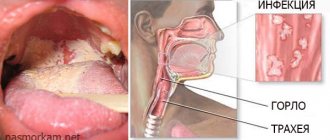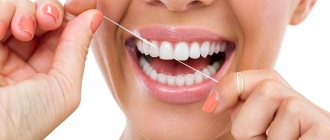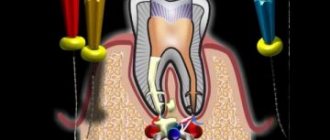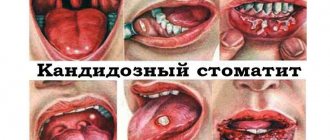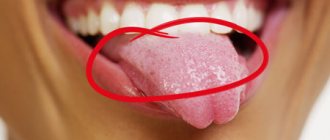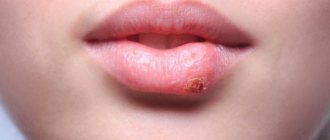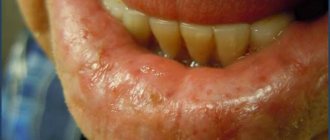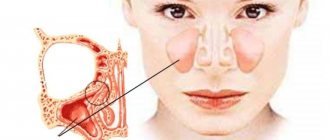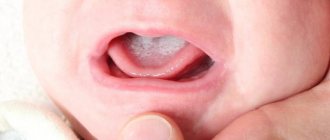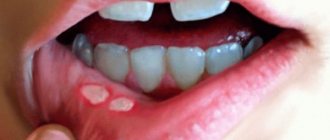Lips are the most vulnerable part of the human body. Due to the absence of the stratum corneum, the lips are too susceptible to the influence of the external environment, so pathogens appear and multiply most often in this area.
Candidiasis on the lips is quite difficult to diagnose in the early stages of development, since there are no symptoms for a long time, and the disease becomes latent. This is the danger of thrush: the fungus develops in the body without any clinical manifestations, and in the end it can cause oncology.
General information about candidiasis
The fungus is an infectious disease and actively develops in winter and autumn. This is due to a strong decrease in immunity and hypothermia of the body at these times of the year.
Externally, the fungus manifests itself in the form of wounds similar to seizures, which are provoked by the active reproduction of pathogenic microorganisms. Among the clinical manifestations are: loss of appetite, pain and burning in the damaged area.
The disease can manifest itself in both adults and children. Sometimes it becomes chronic. For treatment, complex therapy is used, based on the use of antifungal drugs.
Prevention in children
In children, both very young and older ones, thrush can occur. To avoid this, you need to monitor your child. All surrounding objects should either be removed away or treated with antiseptics. To prevent newborns from getting thrush on their lips, they should thoroughly wash their nipples and bottles. As a rule, they are the sources of infection. Doctors advise washing all devices under hot water and baby soap. This will reduce the risk of developing thrush.
Milk and formula should be stored in the refrigerator to prevent bacteria from growing in it.
Main clinical manifestations of candidiasis
Symptoms of the disease appear quite late and, at first, resemble ARVI. But candidiasis can be recognized by the following clinical manifestations: local redness and peeling, the appearance of ulcers near the corners of the mouth, rash, a feeling of tightness in the lips, emotional instability, redness of the lip border, increased sensitivity, plaque, swelling.
Such symptoms are most often observed in advanced stages of the disease, so it is necessary to urgently consult a doctor so as not to infect internal organs with the fungus.
Possible consequences
If therapy is not started in a timely manner, this can lead to the development of complications such as bleeding wounds and erosions. The inflammation that is observed under the whitish film brings severe pain to the baby. It can affect not only the lips, but the entire oral cavity, contributing to the development of yeast stomatitis caused by candida fungi. To prevent this, it is necessary to treat not only the wounds, but also the thrush itself.
If the immune system is very weak, then under the influence of negative factors the disease can take a chronic form. In addition, possible complications of thrush include the spread of the fungus to internal organs, the circulatory system, and skin. This will lead to the development of new thrush, other diseases, as well as complex inflammatory processes.
Causes of fungus
The provocateurs of fungal infection are: emotional stress, hypothermia, sudden climate change, too hot weather, disruption of the hormonal system, diseases of the endocrine system, long-term treatment with antibiotics, failure to comply with hygiene rules, and abuse of sweet foods.
Also, candidiasis can develop if you do not wipe your lips after eating. Pathogenic organisms accumulate in the corners of the mouth and affect soft tissues and mucous membranes.
Another “risk factor” is bad habits and poor diet, as they weaken the immune system. As soon as the immune system begins to weaken, fungal bacteria immediately begin to penetrate into the deep layers of soft tissue and actively develop there.
After taking immunostimulating drugs, ulcers on the lips immediately disappear, and the disease goes into a latent state, but at the first opportunity it will reappear and cause a lot of discomfort.
Causes of disease in newborn babies
Thrush on the lips of infants, as a rule, appears after contact with the mother during feeding. However, there are other reasons for this problem. These include:
- Improper hygiene standards.
- Premature babies are at risk.
- Poor immune function.
- Problems with hormonal levels.
Almost 60% of all newborns experience an acute form of thrush in the first year of life.
Infection occurs due to the fact that children have a habit of putting everything in their mouth. A good preventative method would be to treat all things around the child. It must be remembered that the disease will make the baby capricious, and problems with sleep and appetite will appear.
Types of fungus
For effective treatment, it is necessary to determine the nature of the fungal pathology. Candidiasis happens:
- Pseudomembranous. Accompanied by a white coating on the mucous membrane, itching and burning. Then pimples appear. There is discomfort and pain when talking and eating.
- Acute atrophic. Characterized by increased dry mouth. There is also a burning sensation and pain when moving the tongue. Irritability increases and the patient becomes nervous.
- Hyperplastic. This type of candida infection is the most painful, as it is characterized by the appearance of plaques on the lips and mouth. They make it difficult to chew food. The patient feels acute pain and swelling of the oral mucosa occurs.
- Chronic atrophic. It has a recurrent nature and is manifested by the following symptoms: viscous consistency of saliva, dry mouth, redness of the skin of the lips.
Symptoms
With candidiasis, cracks may appear in healthy areas. White plaque spreads to the tongue and cheeks. Thrush on the lips, in addition to external manifestations, also has other types of symptoms.
The patient experiences itching in the infected area, discomfort that intensifies when swallowing, decreased body temperature, problems with appetite, and weakness of the body. You may feel overwhelmed. The manifestations vary depending on the form of the disease.
Danger of disease
Cracks on the lips indicate a fungal infection, which can soon affect other organs. If left untreated, candida invades the blood vessels, resulting in bleeding.
Candidiasis spreads very quickly, so there is a high probability of fungus from the lip area entering the oral mucosa and developing into a tumor, and then into cancer.
People who smoke are most at risk as they expose their lips to the negative effects of smoke every day. As a result, the shape of the lips may change and cancerous tumors may appear.
Fungus under fingernails. Treatment
Diagnosis of fungus on the lips
Diagnosing a fungal infection with its clinical manifestations is not difficult. But, to accurately determine the type of mycosis, it is necessary to undergo the following tests:
- Fungal infection culture.
- Skin scraping from the corners of the mouth for further microscopic examination.
- A biochemical blood test that helps to recognize the causes of candidal infection.
In some cases, additional tests may be prescribed (throat smear, examination of the mucous membranes of the pharynx using a video camera, x-ray). Such cases are rare, but if there is a threat of fungus getting into the esophagus area, a specialist will immediately give you a referral.
Such procedures are carried out to exclude diseases such as lichen planus, stomatitis, syphilitic papules.
Treatment of candidiasis
Treatment of fungal infection involves taking antifungal and antiseptic agents. For the initial stage of the disease, local preparations are used: various ointments, sprays and creams. In advanced stages, systemic treatment is recommended.
Medication
To effectively treat fungus, experts prescribe local antiseptics (Orasept, Fukortsin, Chlorhexidine), multivitamin complexes (Pikovit, Vitrum, brewer's yeast), and antifungal drugs (Fluconazole, Itraconazole).
Systemic therapy
Also, for effective treatment, medications are prescribed that have a systemic effect on the entire body. Such drugs are:
- Ketoconazole. Contraindicated in cases of liver and kidney dysfunction. It is forbidden to take more than 1 tablet per day.
- Diflucan. It has a strong antifungal effect and is excellent at fighting fungus. It has a number of side effects and contraindications, so you should consult your doctor.
Local therapy (ointment for lip fungus)
Includes ointments and gels that can accelerate tissue regeneration. With fairly high efficiency, topical drugs have almost no contraindications or side effects. Most often, experts prescribe the following remedies:
- Amphotericin. Antifungal ointment, which should be used to lubricate the corners of the mouth in the morning and evening.
- Kanesten. The drug has the same effect, but can also be used to lubricate ulcers on the lips.
Fungal infection of the lip
Fungal disease is widespread and can affect any part of the body, face and internal organs.
Fungus on the lips is quite common and is accompanied by unpleasant, sometimes painful sensations. Mostly fungus in the lip area appears in cold weather and with weakened immunity.
Fungal infection is divided into several types, each of which requires individual treatment.
Reasons for development
Fungal infection occurs for various reasons and can be caused by various fungi, but, as a rule, the disease manifests itself when yeast-like fungi of the genus Candida multiply. A prerequisite for the development of a fungal disease is a weak immune system. There are several reasons that contribute to the appearance and progression of fungus on the lips:
- hormonal imbalance in the body, which is observed in pregnant women, during menopause or in children during adolescence;
- endocrine disorders;
- hypothermia;
- stressful situations;
- long-term therapy using antibacterial agents;
- hot climatic conditions.
Pathogenesis
Active growth of the fungus affects the entire oral cavity.
A person can become infected in different ways, but predominantly the source of infection is inside the body. Often the fungus resides on the mucous membrane, around the mouth or in the corners of the lips, and under favorable conditions it begins to multiply. Soon the fungus damages not only the skin, but also the deep layers of soft tissue.
Even if a person strengthens his immune system, the fungus will stop growing, but will not disappear. It is extremely rare for a patient to be able to completely get rid of lip fungus. It is possible to normalize the balance to such an indicator that the fungi will stop reproducing for a long time, but as soon as the immune system weakens, the fungal infection will appear again.
Often, secondary pathology is more acute and more difficult to get rid of.
Symptoms of pathology
Signs of a fungal disease of the oral cavity or lips are clearly visible and difficult to miss. Different types of the disease manifest different symptoms, but there are also general symptoms characteristic of all types of lip fungus:
- severe redness in the corners of the mouth or directly on the upper or lower lip;
- itching sensation;
- painful sensations when moving your lips;
- the formation of blisters and ulcers on the epidermis.
Cosmetic treatments cannot eliminate peeling lips.
There is also slight peeling and drying of the lips, which cannot be eliminated with hygiene products.
If the above symptoms occur, you should immediately consult a doctor. If you do not prescribe treatment in time and wait until the ulcers and blisters go away on their own, complications may occur.
In this case, the fungus will damage the entire surface of the lips and penetrate into the oral cavity and onto the tongue.
Candidiasis in the lip area
Most often, a yeast-like fungus of the genus Candida appears on the lips, leading to candidiasis. In turn, candidiasis on the lips is divided into 4 types, each of which has its own symptoms:
- Pseudomembranous. It manifests itself as a whitish coating on the lips, itching and burning. The inside of the lip may become covered with white pimples. This type causes pain and dry mouth. Mostly diagnosed in newborns.
- Acute atrophic. It is characterized by problematic and painful movement of the tongue; a person may lose sensitivity to the buzzing sensation for several hours, and experience burning and dryness. Small cracks form on the edge of the lips and it becomes thin.
- Hyperplastic. Often this type of fungus is observed in patients with thrush in other parts of the body. At the same time, taste sensations change, pain occurs when chewing food, the mucous membranes of the inside of the lips and mouth swell, and plaques form.
- Chronic atrophic. This type of candidiasis on the lips is manifested by a burning sensation and dryness in the oral cavity, the patient’s lips become red and swollen, and saliva becomes viscous.
Candidal cheilitis
Cheilitis is an inflammatory process on the lips that causes cracks to form. Candidal cheilitis occurs due to infection by Candida fungi. This disease can be independent or appear as a complication of lip candidiasis.
Deep cracks cause pain when opening the mouth.
First, the mucous membranes turn white-gray and infiltrate. This pathology is characterized by damage to the corners of the mouth, which turn red and peel.
In the depths you can find a crack or erosion, which gives the patient pain, especially when opening the mouth. With candidal cheilitis, bluishness of the lips, swelling and peeling are observed.
Thin gray scales form on them, tightening the skin of the lips.
Diagnostics
Identifying the fungus is not difficult. It is necessary to see a doctor who will take an anamnesis, examine the damaged areas and, if necessary, conduct instrumental diagnostics. The following laboratory tests are often prescribed:
- scraping of damaged skin for microscopic examination, during which it is possible to determine the type of fungus;
- sowing the fungus on a nutrient medium.
As a supplement, a general blood test and biochemistry test are prescribed. This is done to determine the causes of the fungus.
Such diagnostic procedures allow you to confirm the fungal infection and help you choose the most appropriate treatment.
When prescribing therapy, the doctor takes into account all test results and the individual characteristics of the course of the fungal disease in each patient.
Drug treatment
Local drugs are used as monotherapy at the initial stage of the disease.
To eliminate the fungus, antiseptic and antimycotic drugs are used.
If the disease is in the initial stages, then local antifungal therapy is suitable, including ointments, sprays, creams and solutions for treating the affected area. In severe cases and severe fungal infection, systemic therapy is required.
For each patient, the doctor prescribes individual medications and their dosage, taking into account the person’s age, weight and other characteristics. The table shows the main types of fungal treatment and the most commonly used drugs.
| Type of therapy | Form of the drug | Names |
| Antiseptic | Pills | "Novosept forte" |
| "Tantum Verde" | ||
| Spray | "Orasept" | |
| "Tantum Verde" | ||
| Rinse solution | "Chlorhexidine" | |
| Lugol's solution | ||
| System | Pills | "Fluconazole" |
| "Ketoconazole" | ||
| "Diflucan" | ||
| "Itraconazole" | ||
| "Orungal" | ||
| Local | Cream | "Canesten" |
| Ointment | "Nystatin" | |
| "Amphotericin" |
ethnoscience
It is recommended to treat fungus in the lip area using traditional recipes. The use of alternative medicine must be agreed with the attending physician so as not to provoke complications. There are such popular recipes in the fight against pathology:
- Chamomile. A decoction is prepared from this component and applied to the damaged area using a cotton swab.
- Green tea. This medicine should be used in the same way as chamomile decoction.
- Calendula and chamomile. These useful plants are used to rinse the mouth, which reduces the inflammatory process.
- Oak bark and calendula. Both components are taken in a 1:1 ratio, a decoction is prepared and the mouth is rinsed.
- Soda. 1 tsp. The product must be dissolved in 200 ml of warm water and used for rinsing.
Complications
Once in the bloodstream, the fungus affects the entire body.
If therapeutic measures are not taken in a timely manner, serious complications will soon arise, in which a larger area of the epidermis will be affected.
Pathogenic microorganisms will penetrate deeper layers and destroy the normal tissue structure. Soon the patient will experience damage to the blood vessels, pathogenic microorganisms will spread to other areas and bleeding will occur.
In this case, it will be difficult for the doctor to accurately diagnose the pathology and prescribe adequate treatment.
Prevention
The best therapeutic measure for the disease is preventive measures, which primarily involve compliance with hygiene rules. It is forbidden to touch your face with dirty hands and kiss people with a fungal infection.
Each person should have their own utensils and oral care products. If the epidermis on the lips is peeling or drying out, you should additionally use moisturizers.
During the cold season, it is necessary to use hygienic lipstick to protect your lips from damage.
Source: https://EtoGribok.ru/na-tele/raspolozhenie/gribok-na-gubah.html
Recommendations from experts
To speed up the healing process, you must follow the recommendations. Also, these tips are perfect for preventing fungus that has a recurring nature:
Nutrition
The diet should be enriched with protein and fiber, and eating sweets, sour and highly salty foods is out of the question, because they are a favorable environment for the growth of bacteria. Eat more fermented milk products, they destroy pathogenic bacteria.
Consultation
You cannot prescribe medications for yourself, as they have many contraindications and will not be effective for everyone. Also, you should forget about treatment with folk methods from Baba Nyura. Need specialist advice.
The most effective treatment is in combination with medications and ointments.
Smoking
For a speedy recovery, it will be necessary to eradicate this habit, since the harmful effects of nicotine smoke on the surface of the lips will only worsen the course of the disease.
Hygiene products
It is strictly forbidden to use toothpastes with an aggressive composition (antiseptic, whitening agents). They irritate the oral mucosa and provoke fungus.
In addition to these recommendations, you need to take care of yourself and not lick your lips in the cold, try to smear them with Vaseline or a special moisturizer. Do not kiss people who have a pronounced fungal infection on the lips, and also visit the dental clinic regularly.
Preventive measures
To avoid the appearance of thrush on the lips of a child and an adult, you need to follow preventive measures. Candidiasis, although considered an unpleasant disease, can be easily prevented.
Experts recommend following good oral hygiene. No need to use someone else's toothbrush. Despite the fact that antibacterial rinses perform their function well, they destroy the microflora of the mouth - it is better to use them as little as possible. After such remedies, fungi and bacteria will multiply at tremendous speed. There is no need to put off going to the dentist if there are any prerequisites for the disease. It is necessary to treat teeth in time and remove stones. This will keep your mouth healthy. You need to reconsider your diet. It must be correct and balanced. Antibiotics should be taken only as prescribed by a doctor, without exceeding the dosage or prolonging the course on your own. Ideally, you need to give up bad habits. The immune system should be strengthened with vitamins and exercise.
These rules will help not only prevent the development of thrush on the lips, the photo of which disgusts many, but also other diseases of this type.
Thrush on the lips and in the mouth - treatment with folk remedies
Traditional medicine can be quite effective and increase the effect of medications. The following recipes are used to treat fungus:
- St. John's wort oil. Soak a cotton swab in the oil and apply to the ulcers for 15 minutes. Wash off with chamomile infusion and apply moisturizer. The procedure must be repeated 3-4 times a day.
- Soda. The fungus cannot exist in an alkaline environment. Therefore, to eliminate it, you need to make a soda solution (a teaspoon of soda in a glass of water) and rinse your mouth with it. It is also recommended to blot the corners of your lips and lips with it.
- Nystatin. Grind one tablet into powder and add freshly squeezed aloe juice. Apply the mixture to your lips for 20 minutes and rinse with warm water.
- Essential oils. Buy tea tree oil, an oil solution of vitamin A and E, bergamot and lavender oil at the pharmacy. Mix the ingredients in equal proportions and apply it to your lips.
- Herbs. It is necessary to make a decoction of herbs. Mix dry herbs of chamomile, sage and calendula in a ratio of 2:1:1. Pour boiling water over the herbs and leave for 3 hours. Apply lotions 3-4 times a day.
- Lemon . Squeeze lemon juice and mix with a teaspoon of honey and a few drops of aloe juice. Apply to lips for 10 minutes. You can also use freshly cut lemon peels. They perfectly disinfect the skin of the lips.
- Decoction. To prepare the decoction you will need: dill seeds, oak bark and St. John's wort. Mix the ingredients in equal proportions and pour boiling water. Leave for 2 hours. After this time, the decoction can be used either orally (a tablespoon on an empty stomach) or topically (wipe ulcers and rinse your mouth after eating).
- Juice. To make medicinal juice that will kill pathogenic microorganisms, you need to take cranberries, viburnum and carrots. Grind everything in a blender and add a spoonful of honey. Consume before meals. Excellent for removing plaque and pain.
- Calendula. This plant is rich in natural antibiotics, which perfectly relieve inflammation and accelerate tissue regeneration. Recipe: brew calendula flowers and currant leaves, wait until the tincture cools and drink. You can add a little honey for taste.
- Lotions with onions. Squeeze onion juice and mix with the same amount of chopped garlic. Soak gauze with this mixture and apply to lips for an hour. Do the procedure three times a day.
- Aloe. Cut two aloe leaves and scald them with boiling water. Carefully cut off the peel and squeeze the juice into a container. Add half a teaspoon of honey to aloe juice and wipe your lips with the mixture. You can also take aloe juice with honey orally. This will anesthetize and disinfect ulcers located in the oral cavity.
White plaque in a child's mouth
General practitioner, rehabilitation specialist Volkova A.V.
